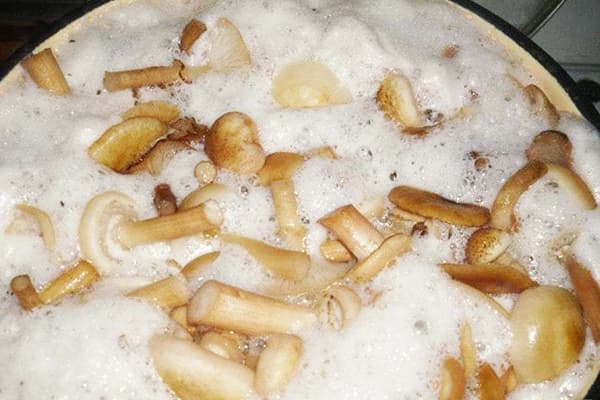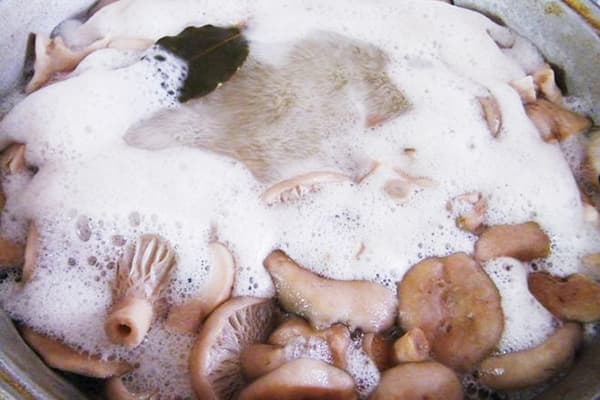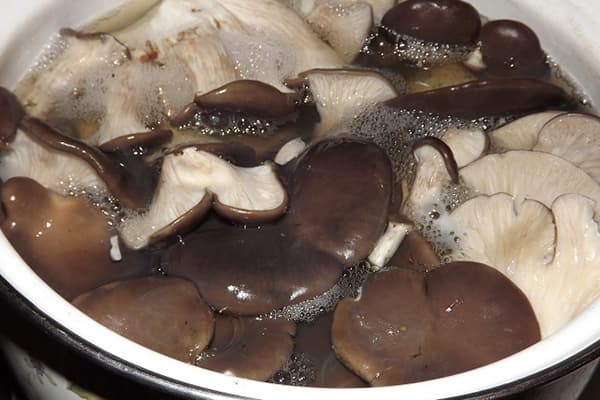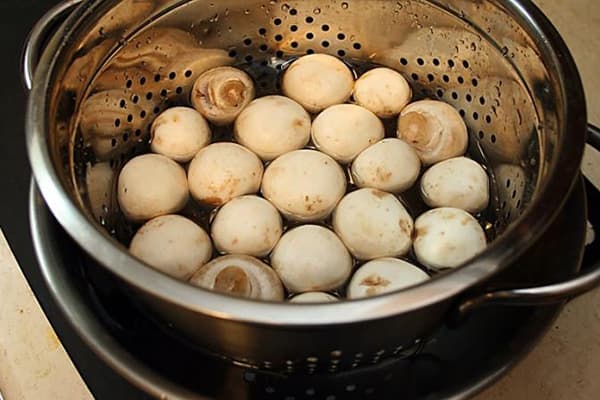What to do with the foam that forms when cooking mushrooms?
Mushrooms absorb a lot of things from the environment: useful and not so useful. Cooking will save you. But many inexperienced gourmets are alarmed that foam forms when cooking mushrooms.

What is foam?
We all know that during boiling, some substances pass from food into the broth: vitamins, fats, salts. The same goes for protein. If fat forms recognizable fatty droplets that spread over the surface of the water in a thin film, then the protein, being released during heat treatment and passing into the water, coagulates. Hence the foam.
During cooking, it curls up even more, becoming like dirty, black rags. This applies to both the foam from cooking meat and the foam from cooking mushrooms. Moreover, especially mushrooms, since due to their loose structure they form it much more actively: the protein is easier to release.
Do I need to skim off the foam when cooking mushrooms?
Foam is not just unsightly rags on the surface of the broth. Along with it, potentially dangerous components come out of the product:
- harmful, even toxic substances that they naturally contain (we are talking about conditionally edible mushrooms, such as, for example, morels or strings);
- natural bitterness;
- everything that they managed to absorb while growing (including harmful microorganisms, radiation, salts of heavy metals).
In addition, during cooking, eggs or larvae of parasites, small worms and similar unfriendly living creatures that love to live in the tender, juicy and nutritious pulp of mushrooms are destroyed.
Now it’s clear why skimming the foam: this is how we clean the water where the mushrooms are cooked from all harmful substances. If you simply drain the resulting broth at the end of cooking, there will be no such effect, because these sponges can perfectly absorb everything from the foam.
If you plan to dry mushrooms, then boiling is not required before it: this is done before directly using the dried product for cooking. But before freezing for future use, further frying or subsequent pickling for the winter, boiling is a necessary item.
If you plan to fry the mushrooms after boiling, be sure to salt the cooking water. Otherwise, salt added during frying will make the fibers tough.
By the way, subsequent frying is also heat treatment, which is important to consider. So when preparing mushrooms for “going to the frying pan,” it makes sense to reduce the pre-boiling time by 10–15 minutes.
Did you take it off and forget it?
Fishing out the foam with a slotted spoon and forgetting about it until the end of cooking is a thoughtless task. After all, it is constantly being formed, and each portion contains certain “useless” things. So you will have to remove it constantly, literally standing over the pan with a slotted spoon.
Like different types of meat, different types of mushrooms are cooked differently:
- champignons – 5 minutes;
- oyster mushrooms, milk mushrooms (these are pre-soaked) – 15 minutes;
- boletuses, chanterelles – 20 minutes;
- russula – 30 minutes;
- white – 40 minutes;
- boletus mushrooms – 40–50 minutes;
- honey mushrooms – 50–60 minutes.
If you are not sure whether the product is ready, remove it from the heat. The finished mushrooms will sink to the bottom.
It is recommended to cook “particularly resistant” mushrooms (boletus, honey mushrooms, porcini) by draining the water several times, rinsing, and then continuing cooking in new water.But the foam will appear again, so you need to remove it again! This is the only way to be sure that the maximum of harmful substances will leave. And in order for the broth to “take away” as little usefulness as possible, it is necessary to boil it in a small amount of water.
Preparatory stage
Before sending the mushrooms to cook, you need simple preparatory measures:
- sorting by quality;
- cleaning;
- trimming damaged areas (spots, “damaged” areas, wormholes, areas eaten by slugs).
In old mushrooms, the blackness under the cap is also removed. This is all done immediately after harvesting.
Next, the product is washed, soaked if necessary, and then boiled.
If cooking is scheduled for tomorrow, after cleaning the mushrooms are not washed or trimmed, but sent to the refrigerator.
For those species that do not require pre-soaking, washing should be as quick as possible. There is no need for them to absorb excess water.
So, mushrooms are a product that requires extensive processing. If you follow all the rules, change the water, skim off the foam that forms when cooking mushrooms, you can prepare not only tasty, but also healthy dishes.



This is how you have to not like mushrooms, to boil, drain, rinse, again.... . stupid! These are mushrooms, not toadstools.
And after cooking, she flushes the mushrooms into the toilet, stirring.
Cooking mushrooms of the first and second categories - white mushrooms, boletus, chanterelles, etc., especially for 40 minutes, is idiocy. White and saffron milk caps can be safely eaten raw. I wonder what tasty things will remain of them after this!? About the foam, if you can agree. then everything else is BSK. Whites, boletus, obabki, chanterelles, and even gray-pink fly agaric, and many others go into the frying pan right away!!! Otherwise, all the taste and aroma will end up in the sewer.
I really love mushroom soup, but when cooking mushrooms, a lot of foam is formed, and it’s really not enough to remove the foam once and forget, foam is constantly formed during the cooking process. And if you don’t remove it, the broth will be cloudy and not tasty.